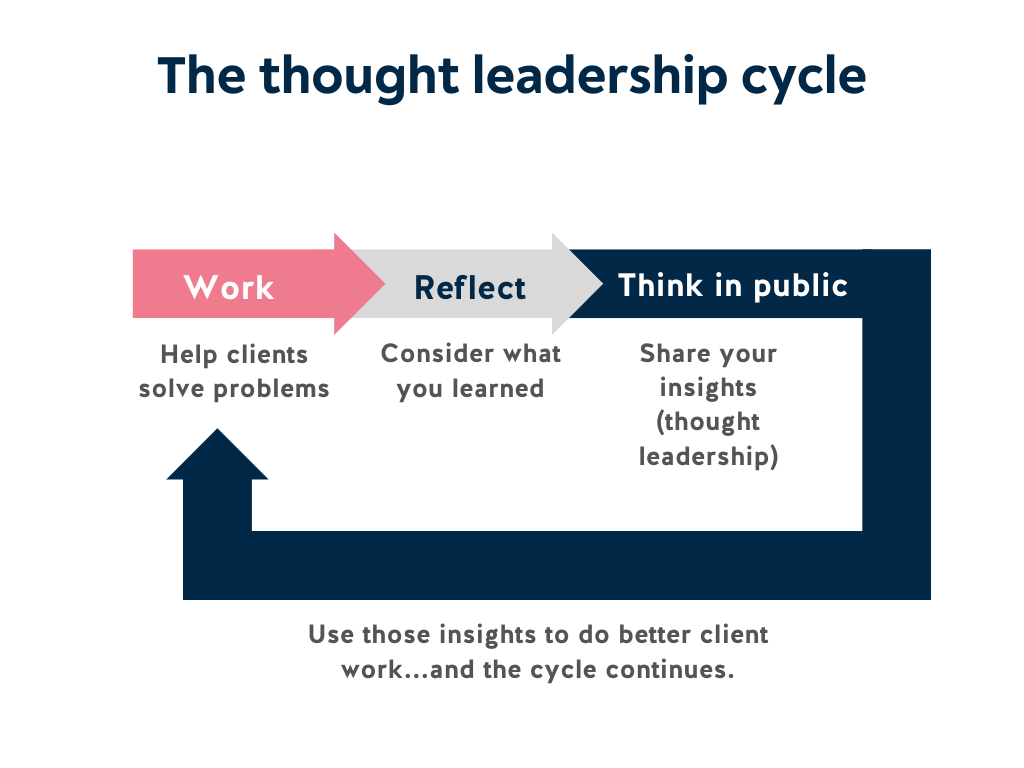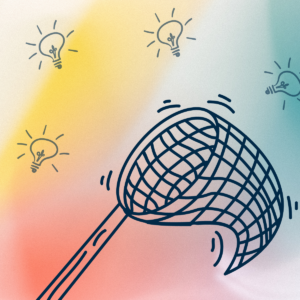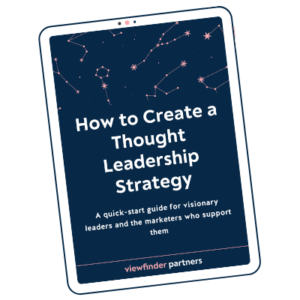Have you ever felt like your brain was full of spaghetti?. Your thoughts are jumbled. You have too much going on. You have good ideas, but they take a long time to explain. People’s eyes glaze over in the middle of your conversation.
Most of the thought leaders I work with face this problem. They are rich in context, research, and information. But they’re missing the “so what?”. They need that moment of alchemy when their big idea rises to the top and all of the context finally lines up and points in the same direction.
A thought leader’s job is to distill and refine
Thought leaders make new content. Right?
Maybe…not. I have a different goal for the thought leaders I support: to distill and refine. I want them to streamline the conversation, not complicate it. To quiet the noise and lead in a new direction. Instead of pumping out more content for already-flooded digital spaces and conference rooms and bookshelves, thought leaders’ highest aim is to help people distill and understand all of the information around them. Thought leaders help people find the diamonds in the rough.
Messaging strategist Tamsen Webster calls this principle the Red Thread® method. In her words, a red thread is “what makes things make sense.” So, for example, if you were stuck in a maze, you could follow your red thread back to where you started to understand how you got there. And your red thread can guide others and help them make sense of complicated topics.
Reflection is how we make sense of what’s happening around us. It’s how we uncover the diamonds and find the thread. That’s why I focus heavily on the reflection step of the thought leadership cycle. The process is simple: do new work, reflect on that work to pull out the big idea, and share the insights with others.
Most people want to start with all the juicy details, so I look to those details for inspiration as we work toward the big idea. “Send me everything you have,” I tell clients. I want to read and peruse their ideas, research, and loose threads. But that information dump is the beginning of thought leadership, not the end. When I’m reading through 70-page Powerpoint decks and reams of research, and when I interview thought leaders about their work, I’m not looking for the details. I’m looking for the big takeaway — one sentence I’ll circle and highlight.
Distilling ideas is the hardest part of thought leadership. It’s a lot easier to stack up mounds of research and background than it is to find the needle in the haystack, the one key idea that illuminates everything else.
An exercise for the overwhelmed thought leader: Say it in 7 words or less
Here’s an exercise I use to help thought leaders cut through the noise and land on their big idea: I give them a creative constraint. If they are focused on writing a white paper, long article, or book, I stop them. Instead, I ask them to write the headline.
In 7 words or less, what’s the big idea?
When you only have seven words, you can’t hide behind jargon. You can’t rely on complicated graphs. You only have seven words to get crystal clear on your perspective. What are you arguing? What’s the simplest version of your idea?
If you’re still tongue-tied or have too many words, try filling in one of these 7-word (or less!) templates:
Before, we _____ but now we ______.
In order to _____, we must _____.
_____ shows us _____.
Warning: _____ is _____.
Surprise! _____ is _____.
Why don’t we _____ instead of _____?
Once you’ve clarified your simple, big-picture idea, you can bring in the facts and stories to support it. Start with the simplest version of your idea, then bring in the details.








